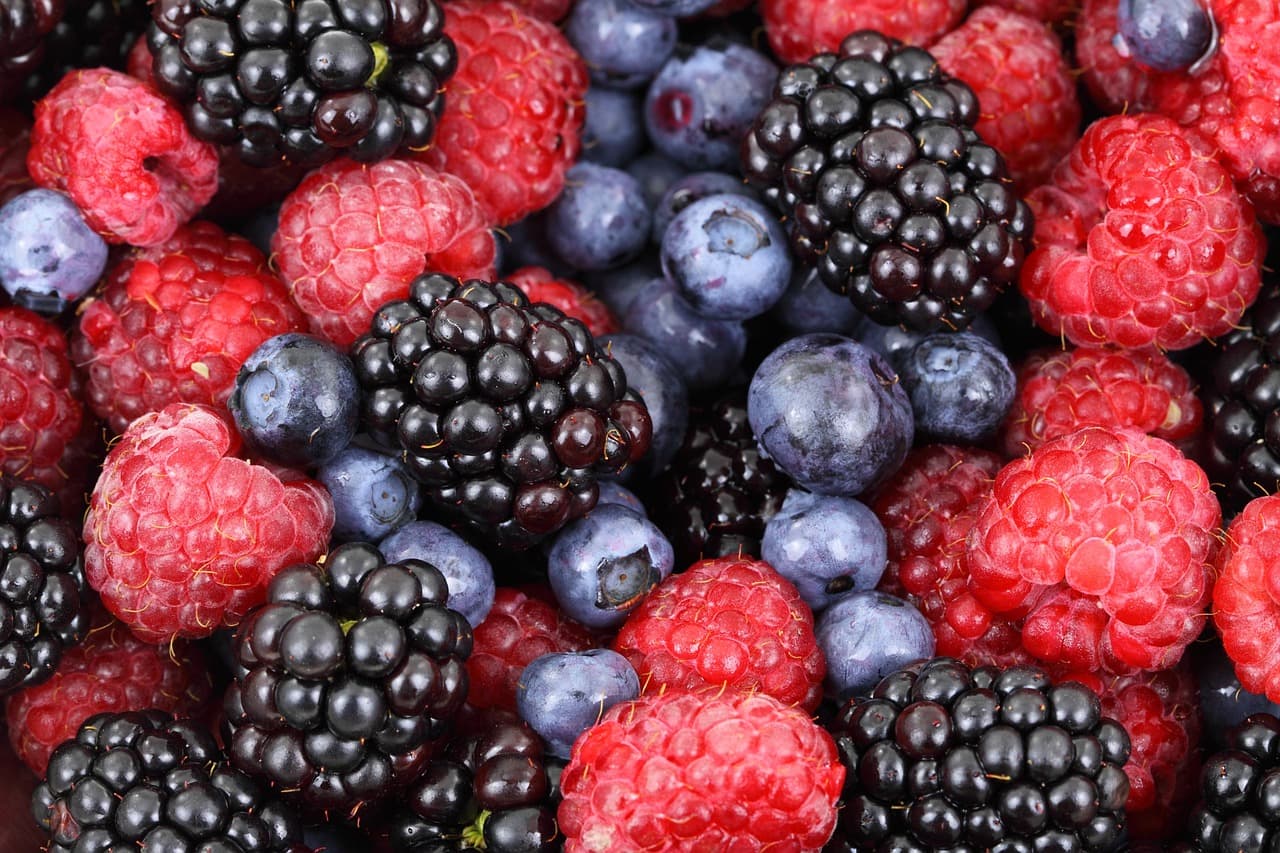How to Freeze Fruits?

Freezing fruits is a simple and effective storage method that allows us to maintain the freshness and taste of our favorite fruits for longer. It's the perfect solution if we want to enjoy their rich vitamins, minerals, and other nutrients regardless of the season.
It's worth noting that freezing fruits is also a great way to prevent food waste. This method allows us to save excess fruits that we couldn't eat during the season, and now we can use them to prepare delicious smoothies, desserts, muffins, or salads.
What is the freezing process?
The freezing process involves lowering the temperature of food below the freezing point, which is 0 degrees Celsius. As a result of this process, the water in the food turns into ice crystals, which stops enzymatic, bacteriological, and chemical processes that cause food spoilage.
How to properly freeze fruits?
Here are a few simple steps:
1. Choosing the right fruits: Freezing is suitable for almost all types of fruits, such as strawberries, raspberries, blueberries, apples, pears, apricots, and many others. It's best to choose ripe, fresh fruits for the best taste.
2. Preparing the fruits: Before freezing, it's worth rinsing and drying the fruits. If they are larger fruits, like apples or pears, it's a good idea to cut them into smaller pieces or slices to make it easier to use the frozen fruits later.
3. Laying out on a flat surface: Spread the prepared fruits on a flat tray or board so they don't touch each other. This prevents them from sticking together during freezing.
4. Freezing: Place the tray with fruits in the freezer for a few hours until the fruits are completely frozen. After this time, you can transfer them to freezer bags or containers.
5. Storage: Fruits frozen in bags or containers can be stored in the freezer for many months. It's important to remember that storage time may vary depending on the type of fruit.
Freezing fruits is an excellent way to enjoy their taste and nutritional values all year round. This way, we can easily prepare delicious dishes that add color and health to our daily meals.
Let freezing become your ally in maintaining a healthy lifestyle, and expand your culinary possibilities with new, tasty, and colorful recipes all year round!
What can be frozen?
Fruits: Strawberries, raspberries, blueberries, cherries, apples, pears, peaches, mango, pineapples, bananas (sliced), citrus (e.g., oranges, lemons - in juice or peel form).
Vegetables: Spinach, broccoli, carrots, peas, green beans, peppers, pumpkin, zucchini, onions (chopped), tomatoes (for preserves).
Meat and fish: Fish fillets, ground meat, chicken pieces, turkey, pork, beef, sausage, smoked meat, fish.
Baked goods: Bread, rolls, cakes, pancakes.
Ready meals: Soups, stews, lasagna, casseroles, dumplings (unsmoked).
Seafood: Shellfish, frozen shrimp, mussels, octopus.
Dairy products: Milk (in incomplete packages), butter, cheese.
Cakes and cookies: Cupcakes, muffins, cookies, cakes.
Frozen ready meals: Fries, nuggets, pizza, dumplings (fried).
Remember, not all products are suitable for freezing, so it's worth checking their specifics before making a decision. Freezing is also a great solution for excess products, which can later be used to prepare delicious meals and save time in the kitchen. Before freezing, it's important to ensure proper packaging to avoid loss of quality and aroma.
Blanching
In addition to freezing, vegetables can also be blanched. Blanching is a popular vegetable preservation technique that helps maintain their freshness, taste, color, and nutritional values.
How to blanch broccoli?
Step 1: Preparing the broccoli
Choose fresh and ripe broccoli.
Clean them thoroughly under running water, removing any leaves and unnecessary parts.
Divide the broccoli into smaller florets to facilitate even blanching.
Step 2: Cooking
Prepare a large pot of boiling water.
Add a pinch of salt to the boiling water (optional, but adds flavor).
Place the broccoli florets into the boiling water.
Cook the broccoli for about 2-3 minutes.
Step 3: Cooling
After 2-3 minutes of cooking, drain the broccoli from the boiling water.
Immediately immerse the boiling broccoli in a large container of ice-cold water or apply ice water. This stops the cooking process.
Step 4: Drying
After cooling the broccoli in ice-cold water, drain and dry them using a paper towel or sieve.
Now you can use the blanched broccoli in your favorite recipes or freeze them to enjoy fresh vegetables for a long time. If you plan to freeze the broccoli, place them in airtight plastic bags or containers, marking the freezing date. Thanks to blanching, broccoli retains its properties and taste even after thawing and cooking in the future.
What can be blanched?
Besides cauliflower, many other vegetables can be blanched before freezing. Vegetables such as broccoli, carrots, peas, green beans, zucchini, zucchini, peppers, or spinach are perfect for this technique.
How to make blanched vegetables?
Blanching involves briefly cooking vegetables in boiling water, then quickly cooling them in cold water or ice. This process helps stop enzyme activity in vegetables, which could otherwise lead to loss of color, taste, and nutritional values. Blanching also destroys bacteria, making frozen vegetables safe to consume for a long time.
What does blanching do?
Blanching is also an ideal way to prepare vegetables for further processing, such as pickling or cutting into frozen snacks. Through this process, we can enjoy the taste and nutritional values of seasonal vegetables all year long.
It's worth emphasizing that blanching is a simple and effective way to preserve the quality and freshness of vegetables, so it's worth using when preparing your own winter supplies. This way, even out of season, we can enjoy the taste and nutritional values of our favorite vegetables in various dishes and meals.
It's also worth mentioning that on our TikTok, you'll find an interesting video demonstrating the freezing process. You'll see step-by-step how to properly prepare fruits or vegetables before freezing, how to pack them, and which packaging to choose to preserve their freshness. Additionally, you'll learn a few practical tips to make storing frozen products easier.
Link to the video ➡️HERE
Read also:

